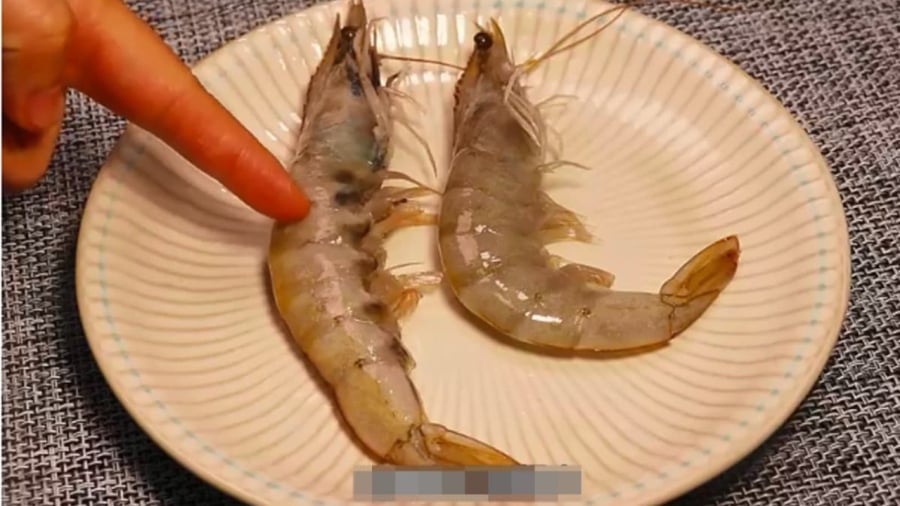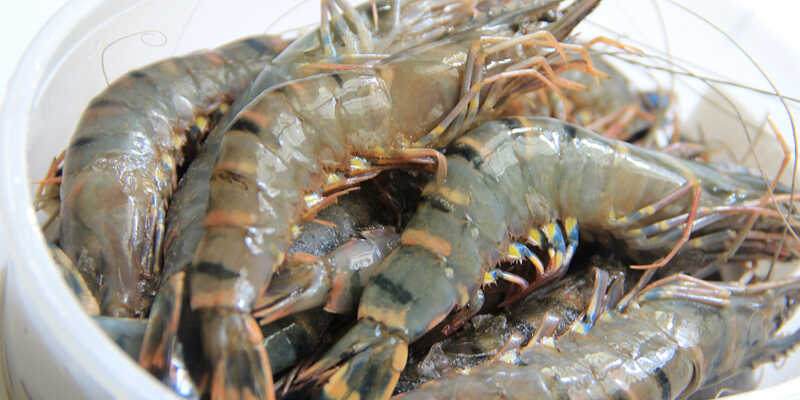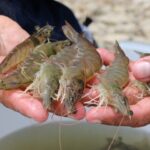Shrimp is a familiar delicacy on Vietnamese family tables. Shrimp is delicious, nutritious, and can be prepared in many appetizing ways such as steaming, boiling, stir-frying, braising, simmering, roasting, and making shrimp salads. However, when it comes to choosing between curved or straight shrimp, not everyone knows which one to pick. Let’s explore this further.
Curved or Straight Shrimp: Which is Better?
Live shrimp will naturally have a curved body and firm, taut meat. This type of shrimp will also curl up when stimulated by low temperatures.
On the other hand, dead shrimp have loose meat, and no matter how you twist them, they will remain straight. If you’re not careful, it’s easy to end up buying dead shrimp that has been stored in a freezer, which not only has poor meat quality but also has a strong, unpleasant fishy odor that cannot be masked by any cooking method, resulting in an unsatisfactory dish.
When choosing frozen shrimp, chefs also recommend opting for curved shrimp. These are shrimp that were frozen while still alive. Straight shrimp in the freezer section are those that were frozen after death.

5 Tips for Choosing Fresh Shrimp
Inspect the Shell
Fresh shrimp will have a shiny, transparent shell that adheres firmly to the body. Shrimp with a dull white or purplish-gray color are long dead and no longer fresh. Avoid shrimp with slimy shells or a strong fishy odor.
Check the Head and Body
The head of fresh shrimp is firmly attached to the body. If the head is loose and can be easily pulled off, or if there is liquid coming out from the neck area, it’s an indication that the shrimp is spoiled. The body of fresh shrimp is also firm, without any signs of softening, discoloration, or unusual odors.
Examine the Legs and Antennae
The legs and antennae of shrimp are also indicators of freshness. Fresh shrimp will have long, intact antennae and legs that cling firmly to the body. It’s best to avoid shrimp that have lost their antennae or legs.

Smell the Shrimp
Fresh shrimp has a characteristic sea-like odor, slightly fishy but pleasant. If the shrimp has a putrid, sour, or strange odor, it has undoubtedly gone bad. Smell is the most obvious sign to determine the quality of seafood, so don’t skip this step when buying shrimp.
Opt for Live Shrimp if Possible
The best option is to buy live shrimp that are actively swimming. You’ll find that their sweetness and flavor are far superior to those that have been frozen or stunned.
How to Choose Shrimp by Type
Tiger Shrimp
Tiger shrimp is a common and popular variety due to its large size and delicious taste. When choosing tiger shrimp, look for live ones that are actively swimming. The shell should be smooth and shiny, with bright colors. The head and body should be firmly attached, and the shrimp should be straight or only slightly curved. Fresh tiger shrimp will have a light translucent color in the body.
Iron Shrimp
Iron shrimp are much smaller than other varieties, but they have a sweet and flavorful taste. Their shell is thin and colored in a light pinkish-white hue. If the shrimp have been stored for a long time, their shell will turn a deeper shade of pink or appear slightly dull.
Banana Shrimp
Banana shrimp resemble tiger shrimp but are smaller in size and have thinner shells. Fresh banana shrimp have a light pink color, bright blue eyes, and are actively swimming. Their shells should be firm, not soft and mushy.
Lobster
Lobsters are large and valuable, so extra care should be taken when choosing them. It’s best to buy live lobsters with actively moving claws. The shell should be hard, shiny, and free of scratches or cloudiness. The head and body should be firmly attached, without any protruding meat.
How to Tell the Difference Between Farmed and Wild Shrimp: The Super Simple Trick Sellers Don’t Want You to Know.
Introducing the ultimate guide to mastering the art of shrimp differentiation. With years of experience in the seafood industry, our expert is here to reveal the secrets to telling farmed and wild-caught shrimp apart. Learn the tricks of the trade and impress your guests with your shrimp-savvy skills at your next dinner party. It’s time to elevate your seafood game!






































